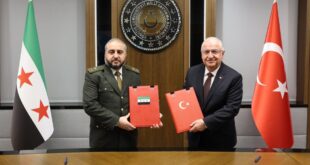U.S. policies in the Middle East are built on outdated “legacy” aid packages, massive arms sales and a disproportionate focus on the Iranian threat that fail to advance American interests – or help the region’s people – and need to be rethought, according to a new RAND Corporation report.
The United States devotes an overwhelming share of foreign military financing to just three countries – Israel, Egypt and Jordan, which received 81% of the $6 billion spent globally in 2019. If policymakers were to pursue an alternative strategy outlined by RAND researchers, they would rebalance America’s support by prioritizing non-security investments in development and improved governance, which could enhance regional stability.
“This imbalance limits the depth of cooperation the U.S. can realize with other Middle Eastern countries outside of the Big 3,” said Linda Robinson, co-author of the report and director of the Center for Middle East Public Policy (CMEPP) at nonprofit, nonpartisan RAND. “We propose continuing to engage in the region but doing so at a more measured rate and with a smarter approach.”
The report reimagines a U.S. strategy in the Middle East with a positive vision of outcomes rather than one focused solely on threats. “We need to start thinking about what we are for in this region, not just what we’re against,” said Dalia Dassa Kaye, lead author of the report, former CMEPP director at RAND and now a fellow at the Wilson Center.
Under this alternative strategy, the U.S. would shift from a heavy reliance on military tools to an approach that prioritizes economic investments, governance, diplomacy and programs focused on people. That might entail reducing sales of high-end offensive weaponry in favor of equipment tailored to defensive purposes and closing the gap between the Big 3 aid recipients and other regional partners.
The strategy would also entail a counterterrorism focus on nonmilitary programs to stabilize war-torn countries and counter violent extremism; increased support for domestic reform efforts already underway and supported by leaders across the Arab world; and regular evaluations of all assistance programs. Resources would move to those countries and programs that produce desired outcomes in support of U.S. strategic goals.
The recent announcement by the Biden Administration to withhold support to Saudi Arabia for offensive operations in Yemen “is very much in line with the type of strategic recommendations in our report,” said Jeffrey Martini, co-author of the report and a senior Middle East researcher at RAND.
The strategy would favor a long-term time horizon to reduce conflict and support regional growth and development, increasing engagement with Middle Eastern publics on such issues as health, youth unemployment and climate change, for example. It would maintain a spotlight on human rights abuses at the highest levels of government, including consistent pressure for the release of political prisoners.
U.S. policies of maximum pressure and unilateral sanctions have not constrained Iran’s nuclear program or curbed its regional activities, the researchers concluded. Along with restraining Iran’s nuclear program through multilateral diplomacy, America’s longer-term goal should be supporting reforms aimed at changing the environment in which Iran operates to reduce the susceptibility of the region to Iranian influence. Improved governance and stability in Iraq could be particularly important in deflating Iran’s reach.
“The strategy we lay out requires a shift from a military to a nonmilitary mindset,” the researchers conclude. “It requires recalibrating U.S. military support and reducing arms sales while increasing economic, trade and financial investments. It calls for more diplomatic initiative to break out of the current cycle of conflict and escalation. Our assessment suggests that working toward such a long-term agenda with partners, regionally and globally, is an investment that will pay higher dividends, at lower costs, than continuing on our present path.”
 Eurasia Press & News
Eurasia Press & News



